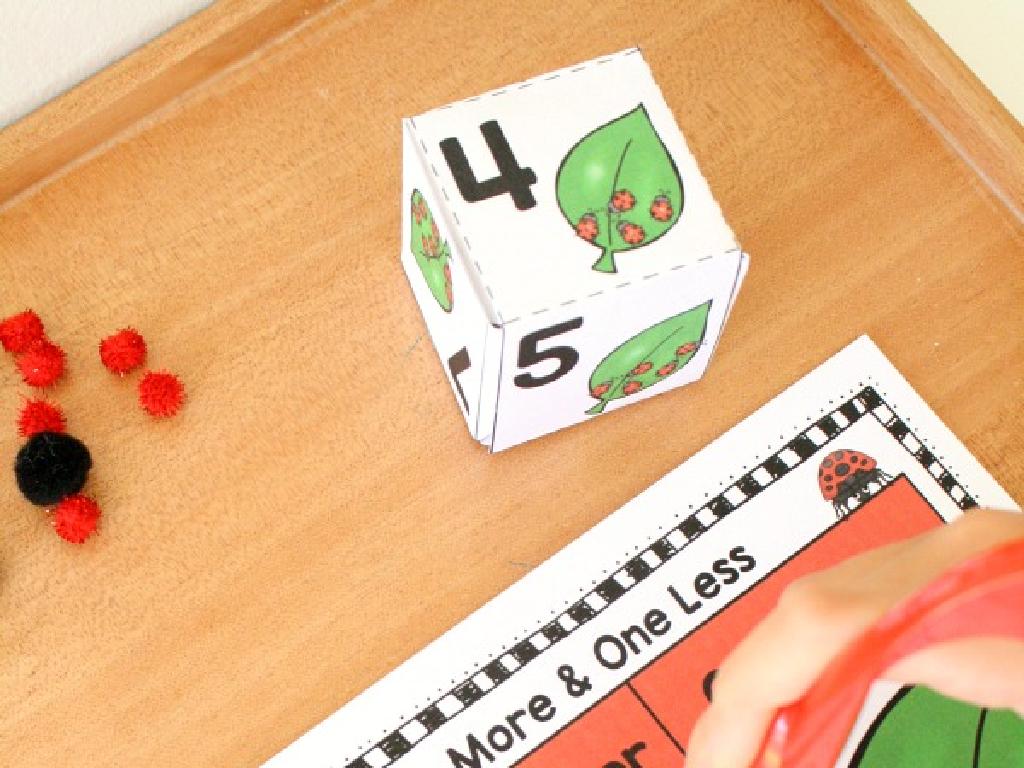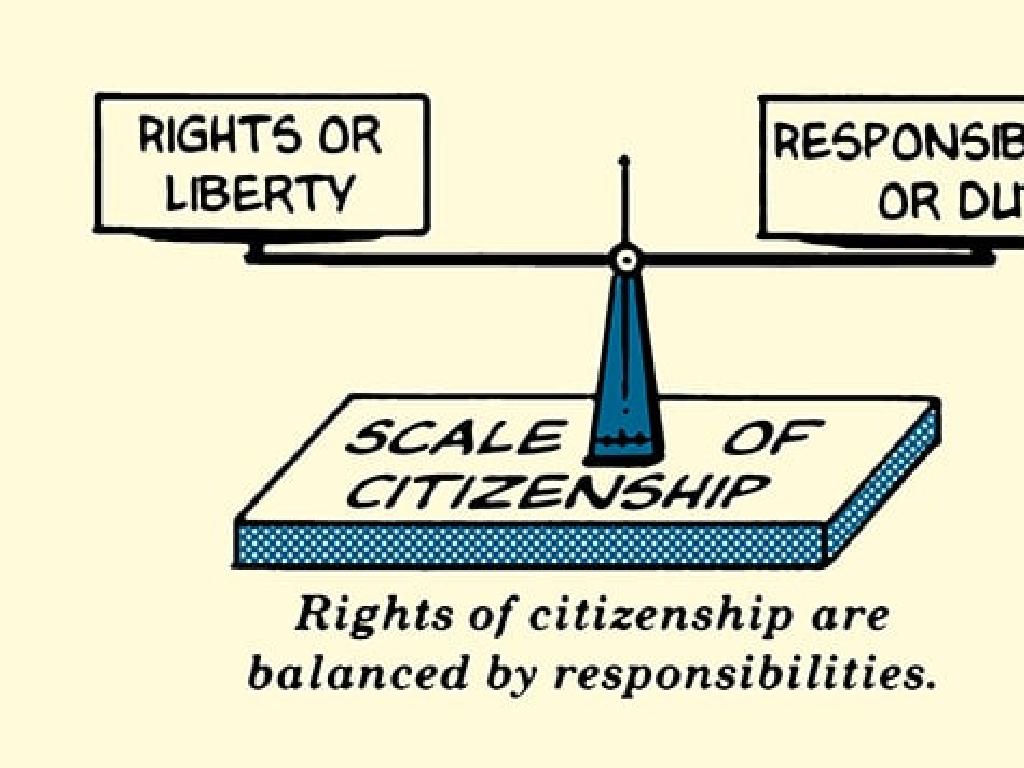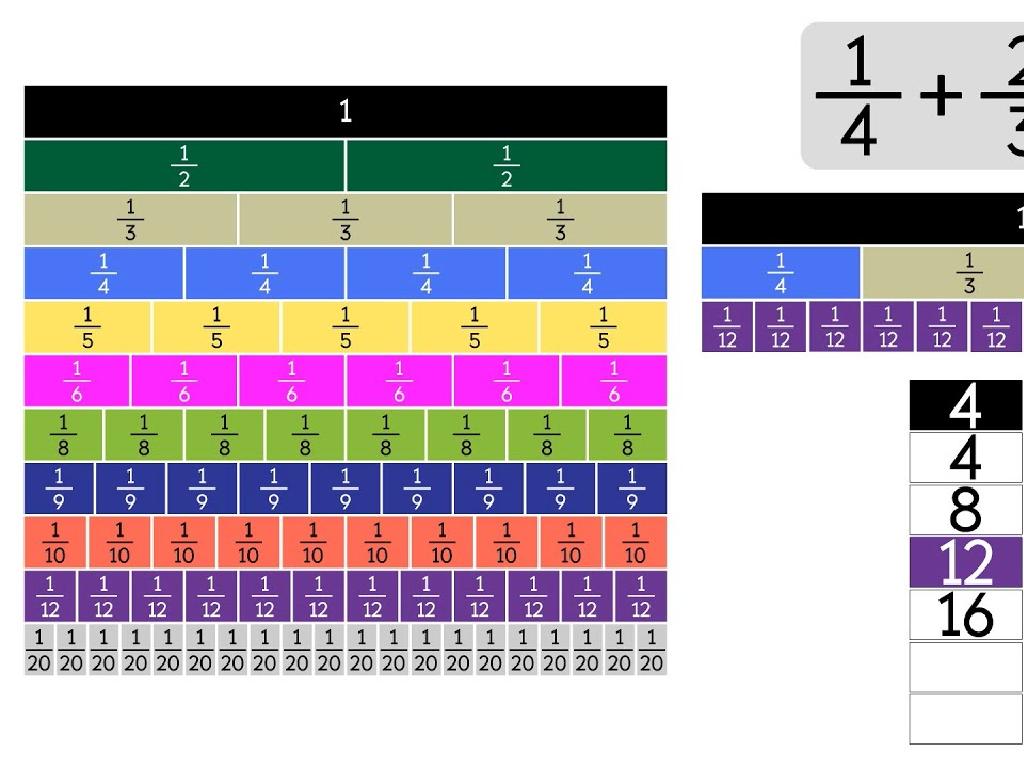Solve A System Of Equations By Graphing
Subject: Math
Grade: Eighth grade
Topic: Systems Of Equations
Please LOG IN to download the presentation. Access is available to registered users only.
View More Content
Introduction to Systems of Equations
– Define systems of equations
– A set of two or more equations with the same variables
– ‘Solving’ systems explained
– Finding values for variables that satisfy all equations
– Real-world systems application
– Examples: budgeting, planning events, or mixing solutions
– Graphing as a solution method
|
Begin by defining a system of equations as a collection of two or more equations that share the same set of unknowns. Clarify that ‘solving’ a system means finding the values of the variables that make all the equations true simultaneously. Provide relatable examples where systems of equations might be used in real life, such as budgeting finances or determining the right mix of ingredients in a recipe. Emphasize that one way to solve these systems is by graphing each equation on the same set of axes and looking for points of intersection, which represent the solution to the system. Encourage students to think of other examples where they might encounter systems of equations in their daily lives.
Understanding Systems of Equations
– Define a system of equations
– A set of two or more equations with the same variables
– Examples of linear equation systems
– e.g., y = 2x + 3 and y = -x + 5 form a system
– Types of systems: consistent, inconsistent, dependent
– Consistent: one solution, Inconsistent: no solution, Dependent: infinitely many solutions
|
Introduce the concept of a system of equations as a set that contains two or more equations with the same variables. Provide examples of linear equations that, when graphed, intersect at a point, indicating they form a system. Explain the different types of systems: consistent systems have one solution where the graphs intersect at a single point; inconsistent systems have no solution as the lines are parallel and never intersect; dependent systems have infinitely many solutions because the lines coincide, representing the same graph. Use this slide to ensure students understand the foundational concepts before moving on to solving these systems by graphing.
Graphing Systems of Equations: Step 1
– Review single equation graphing
– Recall y=mx+b, where m is slope and b is y-intercept
– Plot points to draw a line
– Use ordered pairs (x, y) to represent solutions
– Understand slope significance
– Slope (m) determines the steepness and direction
– Grasp y-intercept role
– Y-intercept (b) is where the line crosses the y-axis
|
Begin by reviewing how to graph a single linear equation, emphasizing the form y=mx+b, where ‘m’ represents the slope and ‘b’ the y-intercept. Remind students that each point on the line is a solution to the equation. Discuss the importance of slope in determining the steepness and direction of the line, and the y-intercept as the point where the line crosses the y-axis. This foundational knowledge is crucial for understanding how to graph systems of equations, as they will be plotting two lines and looking for the point of intersection, which represents the solution to the system.
Solving Systems by Graphing
– Graph two equations on one set of axes
– Plot each equation’s line using slope and y-intercept
– Locate the intersection point
– The point where the lines cross is the solution
– Interpret the system’s solution
– The solution is where both equations are true
– Example: y = 2x + 1 and y = -x + 4
– Find where the lines of the two equations cross
|
This slide introduces students to solving systems of equations by graphing. Start by explaining how to graph linear equations using the slope and y-intercept. Then, guide students to graph two equations on the same set of axes to find the point where the lines intersect. This intersection represents the solution to the system, meaning it’s the set of values that satisfy both equations simultaneously. Use an example like y = 2x + 1 and y = -x + 4 to demonstrate the process. Have students practice by graphing multiple pairs of equations and finding their points of intersection. Discuss how the solution can be one point, no point, or many points, depending on the lines’ relationship.
Class Activity: Graphing Systems of Equations
– Work through example problems together
– Find solutions on the graph
– The point where the lines intersect is the solution
– Address challenges and questions
– Discuss any difficulties in plotting or finding the intersection
– Collaborative learning and support
– Encourage group discussion and peer assistance
|
This slide is meant for a class activity focused on solving systems of equations by graphing. Start by working through example problems as a class, ensuring that each step is clear and understood. Students should identify the solutions to the systems by finding where the lines intersect on the graph. Open the floor to any challenges or questions students may have encountered during the process. It’s important to foster a collaborative environment where students can learn from each other. As a teacher, provide guidance and support throughout the activity. Possible activities include: 1) Pairing students to solve different sets of equations, 2) Group challenges with timed responses, 3) Individual practice followed by group review, 4) Using technology to graph equations, 5) Creating a gallery walk with different graphed solutions for peer evaluation.
Class Activity: Group Graphing
– Form small groups
– Receive unique systems of equations
– Graph systems on coordinate plane
– Use graph paper or digital tools to plot the equations
– Find and mark the solutions
– Intersection points are the solutions to the system
|
This class activity is designed to encourage collaborative learning and hands-on practice with systems of equations. Divide the class into small groups, ensuring a mix of abilities in each group to promote peer learning. Distribute a set of different systems of equations to each group, challenging them with varying levels of complexity. Provide graph paper or access to digital graphing tools. Students will graph each equation in their system on the same coordinate plane and determine the solution by identifying the point(s) of intersection. After completing the activity, each group will present their system, graph, and solution to the class. This will reinforce their understanding and provide an opportunity for feedback. Possible variations of the activity could include systems with one solution, no solution, or infinitely many solutions to expose students to different possible outcomes when solving systems by graphing.
Review and Q&A: Systems of Equations by Graphing
– Recap: Solving by graphing
– Review how to find the point of intersection graphically
– Ask: Open questions time
– Discuss: Clarify doubts
– Address specific student questions and correct errors
– Engage: Interactive recap
– Use examples from class to reinforce learning
|
This slide is meant to consolidate the students’ understanding of solving systems of equations by graphing. Begin by summarizing the steps to graph linear equations and find their point of intersection, which represents the solution to the system. Encourage students to ask any questions they have about the process, and be prepared to clarify common areas of confusion, such as plotting points or determining where lines intersect. Use this opportunity to correct any misunderstandings and reinforce the lesson with additional examples if necessary. Engage the class by revisiting problems solved during the lesson and discussing different methods used. This interactive review will help ensure that students are comfortable with the material before moving on.
Homework: Practice Graphing Systems
– Solve practice problems at home
– Graph systems manually, no calculators
– Practice drawing precise graphs to find the point of intersection.
– Utilize available help resources
– Use textbooks, online tutorials, and ask for help if needed.
– Review and prepare questions
– Look over your work and note any uncertainties for class discussion.
|
This homework assignment is designed to reinforce the students’ understanding of solving systems of equations by graphing. Encourage them to complete the practice problems without the aid of a calculator to strengthen their graphing skills. Remind them to use their textbooks, online resources, or to reach out for help if they encounter difficulties. It’s also important for them to review their work and come prepared with questions for the next class, fostering a deeper understanding and an interactive learning environment. Provide a variety of problems with different levels of difficulty to cater to all students and ensure they practice identifying the point where two lines intersect, as this represents the solution to the system.





